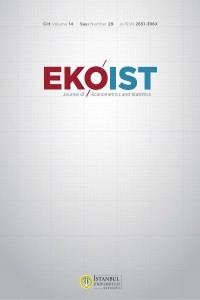ELEKTRONİK OY VERME SİSTEMLERİNDE GÜVENLİK: DENEYİMLER VE TÜRKİYE İÇİN ÖNERİLER
Elektronik oy verme sistemleri teorik bir konu olmaktan çıkmış olup bazı ülkelerdeki seçim ve referandumlarda başarı ile kullanılmaya başlanmıştır. Bu tür sistemler kullanılarak kağıt oy pusulalarında görülen bazı sakıncalar kolaylıkla giderilebilir. Ancak bu sistemlerin de kendilerine özgü güvenlik sorunları vardır. Bu makalede önce adil bir seçim için oy verme sistemlerinin sağlaması gereken ölçütler bağlamında Hindistan, Brezilya ve Venezüella örneklerinin değerlendirmesi yapılmıştır. Daha sonra da ülkemizde bu tür sistemlerinin seçimlerde güvenle ve sorunsuz uygulanabilmesi için kullanılabilecek elektronik oy verme aygıtları ve oy verme süreci ile ilgili bazı öneriler sunulmuştur.
Anahtar Kelimeler:
Elektronik oy verme sistemleri, güvenlik, oy pusulası, mükerrer oy, yaygın sahtekarlık, yerel sahtekarlık, NP-Tamamlık, Mercuri Yöntemi
___
- ACE (2006). Electoral Knowledge Network, http://www.aceproject.org/.
- Akın, M. (2002a), “Bilgisayarlı Oy Verme Sistemleri,” Belgelerle Türk Tarihi Dergisi Dün/Bugün/Yarın, 65, 80.
- Akın, M. (2002b) “Seçimlerde Elektronik Oy Kullanma,” İletişim Fakültesi Dergisi, 15, 401-415.
- Anon (2005). “Uso de las máquinas SAES para las Elecciones Municipales y Parroquiales 2005”, http://www. smartmatic. com/infografia_01. htm.
- Anon., (2006). “Elections in Brasil”,Wikipedia,.
- BM (2005). Human Development Report 2005.
- Carrier, M. A. (20055). "Vote Counting, Technology, and Unintended Consequences", St. John’s Law Review, , 645-687.
- Chaum, D. (2004). "Secret-Ballot Receipts: True Voter-Verifiable Elections", CryptoBytes, 7, 2, 13-26.
- ECI (2004). “Handbook for Polling Agents (At Elections where Electronic Voting Machines are used), Election Commission of India.
- Feldman, A. J., Halderman, A. ve E. W. Felten (2006). Security Analysis of the Diebold AccuVote-TS Voting
- Machine, Teknik Rapor, Princeton University. Gonggrijp, R. et al (2006). Nedap/Groenendaal ES3B voting computer, a security analysis, Rapor, Wij vertrouwen stemcomputers niet.
- Hausmann, R ve R. Rigobon (2004). “En busca del cisne negro: Análisis de la evidencia estadística sobre fraude electoral en Venezuela”, http://www. proveo. org/hausmann. pdf.
- He, M., Almeida, R. ve E. Gissoni (2002). “National Semiconductor and Unisys Equip Brazil with New Voting
- Machines for Fast and Accurate Election Results in the Fall”, http://www.national.com/news/item/0,1735,757,00.html.
- Jones, D. W., (2005). "Threats to Voting Systems", Developing an Analysis of Threats to Voting Systems
- Çalıştayı, National Institute of Standards and Technology, Gaithersburg, Maryland. Kabay, M. E. (2000).“Easter Eggs and the Trusted Computing Base”, Network World Security Newsletter.
- Lauer, T. W. (2004)."The Risk of e-Voting", Electronic Journal of e-Government, 2, 177-186.
- Lehigh-Muhlenberg, (2006). 2006 Survey of Public Attitudes Toward Electronic Voting in Pennsylvania,
- Ana Bulgular Raporu, Lehigh University/Muhlenberg College Institute of Public Opinion. Mercuri, R. T. (2002). “A Better Ballot box?”, IEEE Spectrum, 39, 10
- Mercuri, R. T. ve L. J. Camp. (2004). “The Code of Elections”, Comm. of the ACM, 47, 10, 53-57.
- Norden, L. et al (2006). The Machinery of Democracy: Protecting Elections in An Electronic World, Rapor,
- Voting Rights & Elections Series, Brennan Center For Justice At NYU School of Law. NSF (2001). Report of the National Workshop on Internet Voting: Issues and Research Agenda, Internet Policy Institute.
- Rezende, P. A. D. , "Electronic Voting Systems: Is Brazil ahead of its time?", CryptoBytes, C. 7, No. 2, s. 1-7, Saltman, R. G. (2006). Independent Verification: Essential Action to Assure Integrity in the Voting
- Process, Teknik Rapor, NIST. Sipser, M. (2005). Introduction to the Theory of Computation, Thomson,
- USEAC (2005a), “Voluntary Voting System Guidelines, .I.
- USEAC (2005b), “Voluntary Voting System Guidelines, II.
- Weiner, E. (2004). “The Bombay Ballot, What the U. S. can learn from India's electronic voting machines”,
- Slate, http://www. slate. com/id/2107388/,.
- YSK (2004). Karar No:2002, Resmi Gazete, 26.5.2004.
- Yayın Aralığı: Yılda 2 Sayı
- Yayıncı: İstanbul Üniversitesi
